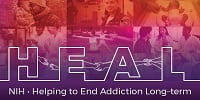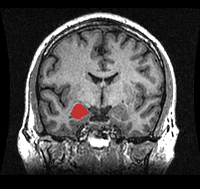
Mar 19 2019
Approximately 1 in 9 women in the United States experiences symptoms of postpartum depression (PPD). Fortunately, research uncovered the biological causes of PPD and lead to the development of a specific treatment. As one part of a major research project funded by the National Institute of Mental Health in the 1980s, researchers discovered that the hormone metabolite allopregnanolone interacts with the neurotransmitter GABA to trigger the symptoms of PPD. After years of further study and clinical trials, the FDA has approved Zulresso (brexanolone), the first-ever drug to specifically treat postpartum depression. To learn more, please visit the NIMH website.

Mar 11 2019
The National Institutes of Health has announced a new long-term study to improve our understanding of the impacts of early exposure to opioids and other substances, environmental toxins, and social stress during fetal development and early childhood. The HEALthy Brain and Childhood Development (HBCD) Study, lead by the National Institute on Drug Abuse (NIDA), is part of NIH’s HEAL (Helping to End Addiction Long-Term) Initiative. This ambitious research will help us create detailed baseline standards for healthy brain development in early childhood. To learn more, please visit the NIDA website.

Mar 05 2019
Individuals with major depressive disorder who struggle to manage their symptoms despite trying multiple antidepressant treatments over a long period of time may have treatment-resistant depression. The FDA has approved a new drug for this serious condition through the expedited Breakthrough Therapy designation process. Spravato (esketamine) is a nasal spray prescribed to be used together with an oral antidepressant and administered under the supervision of a health care provider. To learn more, please visit the FDA website.

Feb 28 2019
Suicide is the second most common cause of death for people aged 10-24 in the US. Despite this significant and alarming public health issue, there have been very few successful intervention programs for high-risk teens. Encouragingly, a recently-published study shows that when the adults in a high-risk teen’s caregiving environment receive education and support, the risk of death by suicide is reduced by half. For more information about this study, please see this article from Vox.

Feb 25 2019
In May 2018 the US Departments of Defense, Homeland Security and Veterans Affairs created a 16-point Joint Action Plan to improve the mental health resources for service members transitioning from active duty to civilian life. The VA now reports that 7 of the 16 points have been completed and early data is very encouraging. In one month, for example, one-third of the 8,000 service members who participated in the Transition Assistance Program registered early for VA health care. For more on this report, please visit the VA website.

Feb 14 2019
Many people who experienced abuse as children also experience cognitive decline as adults. A new study has shown that the hormone interleukin-6 (IL-6) is commonly found in very high levels in these individuals. IL-6, which is involved in processes of swelling and inflammation, can be controlled with medication. Understanding the role of IL-6 may be an important new step to improve the lives of people who experience childhood abuse. For more information about this study, please visit the NIH website.

Feb 04 2019
In a new study of the human microbiome, the complex ecosystem of microorganisms that exists inside a person’s body, researchers have found links between specific bacteria and depression. People with treatment-resistant depression had microbiomes that were less likely to contain serotonin- and dopamine-creating bacteria. Although more investigation is needed, this is a fascinating direction for future research. For more information on this study, please see this article in Forbes.

Jan 30 2019
A new study examining the brain structure and activity of combat veterans with PTSD may help explain why some people experience symptoms of PTSD much more severely than others. Certain areas of the brain involved in learning and emotional response, most noticeably the amygdala, were meaningfully different in veterans with more severe symptoms. For more information about this study, please visit the NIH website.

Jan 16 2019
The NIH’s monumental All of Us Research Program has launched a new way for participants to contribute data with the Bring-Your-Own-Device (BYOD) project. In addition to sharing information through surveys, electronic health records, and biological samples, participants with any Fitbit device can now choose to share data such as physical activity, sleep, weight, heart rate, nutrition, and water intake. For more about the BYOD project and All of Us, please visit the NIH website.

Dec 20 2018
In 2016, more than 6,000 individuals under the age of 25 died by suicide. The majority of young people who die by suicide visit a health care provider in the month before their death, indicating that a universal screening program in medical settings could be a powerful intervention tool. An international committee of clinicians and researchers has created a 3-tiered clinical pathway system as a flexible and resource-conscious way to implement universal suicide risk screening within pediatric health care settings. To learn more about new resource, please visit the NIMH website.
NAMI HelpLine is available M-F, 10 a.m. – 10 p.m. ET. Call 800-950-6264,
text “helpline” to 62640, or chat online. In a crisis, call or text 988 (24/7).